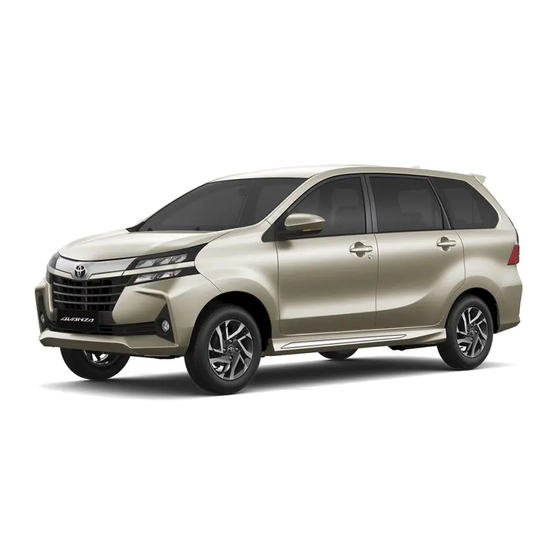
Toyota Avanza Manuals
Manuals and User Guides for Toyota Avanza. We have 1 Toyota Avanza manual available for free PDF download: Owner's Manual
Toyota Avanza Owner's Manual (373 pages)
Brand: Toyota
|
Category: Automobile
|
Size: 6.93 MB
Table of Contents
-
Exterior14
-
-
Floor Mat30
-
For Safe Use
30-
Seat Belts34
-
SRS Airbags40
-
-
-
Child Seat55
-
-
Alarm66
-
-
Indicators72
-
-
The Keys80
-
Key88
-
Side Doors88
-
Back Door92
-
Front Seats96
-
-
-
Rear Seats98
-
Head Restraints102
-
Seat Arrangement105
-
Steering Wheel110
-
Power Windows115
-
-
Before Driving
119-
-
Stopping120
-
When Braking126
-
-
-
Weight Limits131
-
Tire Information135
-
Trailer Lights135
-
Guidance136
-
-
-
-
Parking Brake147
-
Headlight Switch148
-
Fog Light Switch150
-
-
Brake Assist163
-
-
-
Air Conditioning170
-
Luggage170
-
5 Audio System
171
-
Basic Operations
171-
Radio Operation176
-
Using the Radio
176-
-
Random Playback180
-
Selecting a CD180
-
Error Messages183
-
Repeat Play183
-
Repeating a File183
-
Lens Cleaners184
-
Compatible Media185
-
File Names185
-
Extensions186
-
ID3 and WMA Tags186
-
Playback186
-
-
-
Other Functions192
-
Air Outlets193
-
-
Interior Lights200
-
Personal Lights201
-
-
-
-
Aluminum Wheels211
-
Bumpers211
-
-
Road Conditions219
-
-
-
-
-
Hood246
-
Front248
-
-
Engine Oil250
-
Engine Coolant252
-
Brake Fluid254
-
Adding Fluid254
-
Battery255
-
Caution Symbols255
-
Battery Exterior256
-
1NR-VE Engine257
-
2NR-VE Engine257
-
Washer Fluid259
-
-
Tires262
-
Checking Tires262
-
Tire Rotation263
-
Tire Life265
-
-
Wheels272
-
Light Bulbs282
-
Bulb Locations282
-
Front Fog Lights286
-
LED Lights293
-
-
-
-
Emergency Towing303
-
Wheel Nut Wrench304
-
While Towing304
-
Audible Symptoms307
-
-
Visible Symptoms307
-
-
-
-
-
Engine Number342
-
Ignition System346
-
Fuel Information350
-
-
Customization
351 -
Initialization
356-
Index357
-
What to Do if357
-
-
Advertisement
